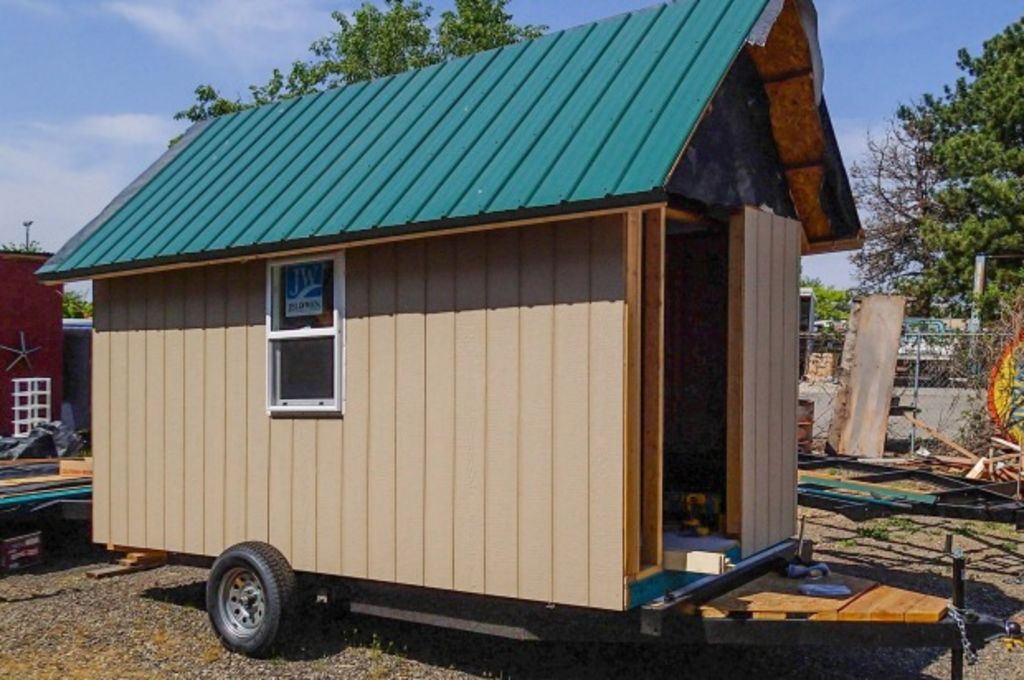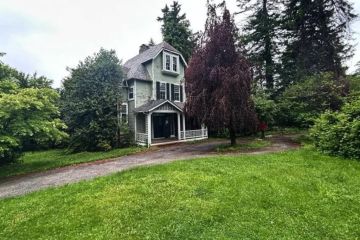Volunteers running small housing initiatives to end homelessness

Disillusioned by a lack of government funding towards affordable housing to support the homeless population, volunteers are taking matters into their own hands.
Volunteer-run , donation-funded organisations worldwide are designing alternative housing in the form of masterplanned villages, high-rise buildings and tiny houses to reduce homelessness in their local area.
Retired carpenter Matthew Scott is a member of newly founded Idaho Tiny House, an organisation building tiny houses to serve as short-term housing for the homeless and disadvantaged.
Recognising the lack of affordable housing in the state’s capital Boise, Idaho Tiny House was formed to procure land for eight-to-10 tiny houses with a common building for showers, cooking and socialising.
The tiny houses are cost effective (Scott estimates $US5000 ($6750) per house) and built on trailers, allowing them to be moved as required, and will be supplied on a lease basis to tenants.
“The homeless will become stewards of a tiny house and pay little or no rent, depending on their income,” Scott says.
“When and if they decide to move up, out or on, the house will be occupied by next on the list.”
Micro Home Village in Nashville has recently started a crowdfunding campaign to establish the city’s first tiny house community.
Fronted by Reverend Jeff Obafemi Carr, founding minister of Infinity Fellowship Interfaith Gathering, the campaign has already raised $US25,000.
“Homelessness robs a person of their dignity, and it’s difficult to even get a job without an address to submit to potential employers,” Reverend Carr says.
The Infinity Micro Home Village will address both of those issues.”
The village is envisioned to encompass six to eight independent units, each about 18 square metres, positioned around a common area with bathrooms.
“Why should the tiny house movement belong exclusively to hobbyists?” Reverend Carr asks.
“We want to take design and construction and put those elements into solving a crisis.”
Each unit will be also be provided with its own wall foldout bed, mini-fridge and microwave, plus a heating and airconditioning unit.
These tiny house initiatives sit alongside various other US designs proposed to ease the homeless issue.
Despite being acclaimed by peers, many have not received the funding required to materialise.
In Hawaii, architects at Group 70 International have designed plans to fit out five retired city buses with amenities to support those in need. Each bus will have a specific purpose, such as sleeping, bathing or cooking.
Dignity on Wheels is another proposed initiative, with an aim to build mobile shower and laundry trailers to be shared by the homeless community.
Recognising poor hygiene and unclean clothing as barriers to securing employment, the trailers allow capacity for 360 showers a week and 216 washing loads.
Designer Asaf Dali’s “Hopetel” is a further example; a proposed high-rise building offering a transient solution to citizens who have lost their homes through foreclosure.
The building design features a permanent base structure with open concept floor slabs, with compact housing units to be installed on the structure as required.
“The spatial organisation of the project’s housing units promotes chances for social interactions between the residents, and strengthens their feeling of safety and security in their current houseless situation,” Dali says.
“Furthermore, this proposal highlights the foreclosure homeless problem by presenting a transparent building that encourages communication with the surroundings and shifts the current topic to the public consciousness.”
Originally designed as part of a conceptual architecture skyscraper competition, Dali believes the model carries realistic potential.
“I believe that the project could be brought to life at a significantly lower cost per square foot compared to other housing projects,” Dali says.
“I think that the concept could be implemented within smaller scale projects and provide a feasible and cost effective solution to address the issue.”
In Melbourne, architect Sarah Crowley has designed a similar project.
Titled “Back on Track”, the 2012 design explores a long-term solution to housing and rehabilitating homeless individuals and families.
Using neglected land in the CBD, the project is envisioned to create a new neighbourhood with up to 40 per cent of formerly homeless persons.
“I noticed that there is a lot of unutilised space either side of train lines, and thought this would be ideal to make use of and develop,” Crowley says.
“I decided to design a development that integrated homeless people with the non-homeless, with plenty of on-site job opportunities: cafes, shops, market gardens, art centres, and the headquarters for The Big Issue.”
Crowley believes the design carries potential for development, depending on the types of people it would be housing.
“It depends on the ‘grade’ of homelessness,” she says.
“This project is really aimed at a solution for secondary and tertiary homelessness – people and families who have lost their jobs, have minor mental health issues or are already living in low-cost public housing.”
The Lady Musgrave Trust has been developing inner-city housing for young women for 130 years.
For the past 15 years, the charity has owned two unit blocks on the north side of Brisbane containing six fully self-contained two-bedroom units.
A new strategy is being implemented to transform the trust’s portfolio over the next two years.
“We are moving toward a change in this approach towards single units in larger blocks to meet the changing homelessness need,” says Patricia McCormack, president of the Lady Musgrave Trust.
“Our current research has identified that establishing single units within larger blocks of units (occupied by many types of individuals from society) are best practice as the clients can assimilate and be given time and independence that they need to reestablish their lives.”
The accommodation provided is classed as transitional accommodation and is offered for a period of up to six months.
The charity receives no government funding and relies heavily on one-off grants and donations to provide services.
“Homelessness is always part of a government’s policies but the problem and the demand continues to increase,” McCormack says.
“Governments can always do more in addressing the causes.”
We recommend
States
Capital Cities
Capital Cities - Rentals
Popular Areas
Allhomes
More
- © 2025, CoStar Group Inc.







